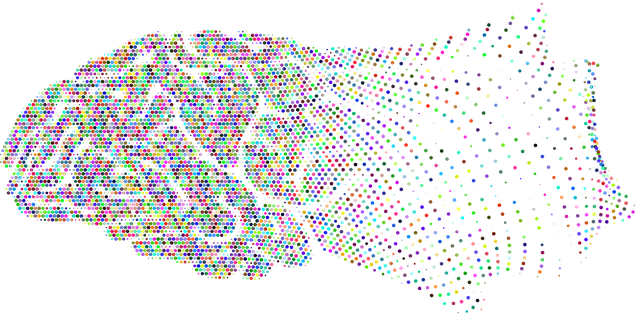Greenwood Village Chronic Illness Therapy employs a multi-faceted approach to risk assessment and harm minimization, focusing on both physical and mental health aspects. They thoroughly evaluate patients' vulnerabilities related to chronic illnesses, tailoring interventions like Social Skills Training and compassion cultivation to address specific needs. This holistic strategy integrates policy insights from Mental Health Policy Analysis and Advocacy, emphasizing active patient engagement, positive thinking, and resilience-building. Regularly reviewed and updated plans ensure a dynamic, supportive environment that adapts to patients' evolving needs, fostering continuous quality improvement and emotional healing.
Risk assessment and harm minimization planning are critical components of effective Greenwood Village chronic illness therapy. This comprehensive guide explores key aspects, from understanding risk assessment in this context to identifying specific harms and vulnerabilities within the patient population. We delve into developing robust minimization strategies and highlight successful implementation at Greenwood Village, including regular review processes that ensure ongoing safety and care optimization.
- Understanding Risk Assessment in Chronic Illness Therapy
- Identifying Potential Harms and Vulnerabilities
- Developing a Comprehensive Minimization Plan
- Implementation and Regular Review at Greenwood Village
Understanding Risk Assessment in Chronic Illness Therapy

Risk assessment is a cornerstone in chronic illness therapy, enabling healthcare professionals at Greenwood Village Chronic Illness Therapy to proactively identify potential hazards and implement harm minimization strategies. It involves a comprehensive evaluation of various factors that may impact a patient’s health and well-being during their treatment journey. By meticulously analyzing these risks, therapists can create tailored plans to enhance self-care practices and promote positive thinking, thereby fostering resilience in the face of chronic illness challenges.
This meticulous process delves into not only physical health considerations but also mental health aspects. It involves scrutinizing treatment protocols, environmental factors, and patient-specific vulnerabilities. Understanding these risks is pivotal in shaping effective interventions that go beyond traditional therapy. Integrating insights from Mental Health Policy Analysis and Advocacy ensures a holistic approach, where harm minimization planning isn’t just a practice but a policy that supports patients’ long-term mental health and overall quality of life.
Identifying Potential Harms and Vulnerabilities

Identifying potential harms and vulnerabilities is a critical step in risk assessment for any therapeutic setting, including Greenwood Village Chronic Illness Therapy. This process involves thoroughly evaluating the unique challenges faced by individuals with chronic illnesses, which can significantly impact their emotional well-being and social interactions. By recognizing these vulnerabilities, therapists at Greenwood Village can tailor interventions to address specific needs, such as enhancing social skills through training programs or incorporating compassion cultivation practices to manage stress effectively.
Vulnerabilities may include difficulties in coping with the physical demands of chronic illness, resulting in heightened stress levels and potential mental health concerns. Moreover, individuals might struggle with social isolation due to their health condition, necessitating supportive environments that foster meaningful connections. Incorporating evidence-based strategies like Social Skills Training can empower patients to navigate interpersonal interactions more confidently, while also teaching them stress management techniques to mitigate the impact of chronic illness on their overall quality of life.
Developing a Comprehensive Minimization Plan

When developing a comprehensive harm minimization plan for Greenwood Village Chronic Illness Therapy, it’s crucial to integrate strategies that cater to both physical and mental health needs. A holistic approach, guided by principles like those found in Mental Health Policy Analysis and Advocacy, ensures patients receive well-rounded care. Start by identifying potential risks associated with the therapy setting, including any psychological or social factors. Implement effective communication strategies to engage patients actively in their care plans, fostering a sense of ownership and empowerment.
Incorporating Mind Over Matter Principles can significantly enhance the therapeutic experience. This involves promoting positive thinking, stress management techniques, and resilience-building activities tailored to individual needs. Regularly review and update the minimization plan based on patient feedback, new research findings, and evolving best practices in chronic illness therapy. Such proactive measures will contribute to a safer, more supportive environment at Greenwood Village Chronic Illness Therapy.
Implementation and Regular Review at Greenwood Village

At Greenwood Village Chronic Illness Therapy, implementation of risk assessment and harm minimization planning is a cornerstone of patient care. Regular reviews are conducted to ensure that strategies remain relevant and effective in addressing potential risks. This proactive approach involves an interprofessional team that collaborates to identify, assess, and mitigate risks associated with chronic illness management. By fostering a positive thinking environment, promoting self-esteem improvement, and facilitating emotional healing processes, the therapy center aims to enhance patient outcomes and overall well-being.
Through these regular reviews, Greenwood Village adjusts interventions based on evolving patient needs and emerging research findings. This continuous quality improvement ensures that harm minimization planning is not just a one-time exercise but a dynamic process that adapts as patients progress in their healing journeys.
Greenwood Village’s commitment to chronic illness therapy stands out through its robust risk assessment and harm minimization planning. By understanding the intricacies of patient risks, identifying potential harms, and developing a comprehensive minimization strategy, the village ensures safe and effective care. The successful implementation and regular review of these plans have solidified Greenwood Village as a beacon of quality healthcare for individuals navigating chronic illness, fostering a supportive environment that prioritizes both patient well-being and therapeutic outcomes.











